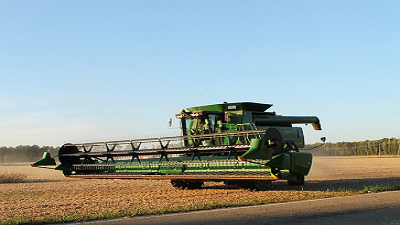What does the future hold for Minnesota’s farmers?
Minnesota’s farmers have faced an array of issues this past year, from weather-related property losses to destructive trade wars and another year of low commodity prices. The Midwest is witnessing the loss of dairy farms at an alarming rate. Optimism wanes as farmers face a multitude of issues, created by nature and weather challenges and compounded by man-made policies which have veered off-course from providing support to our agricultural economy.

State Representative Jean Poppe
Chair of the Agriculture and Food Finance and Policy Division Committee, Minnesota House
These increased challenges have transitioned the economic plight of these farmers for roughly five years. Farmers who have historically produced food for a global market are now struggling to feed their own families. Some farmers have adjusted to changes by diversifying their operation. A growing number of farmers are looking to local and regional markets for farm to table opportunities. Jobs off the farm are becoming the norm.
Minnesota ranks fourth among all states for agricultural exports,[1] but federal trade wars and international tariffs are affecting this portion of our economy. While Minnesota is not alone in grappling with the fallout of trade wars conducted at the federal level, China is one of our leading export destinations, especially for our soybean industry, which adds a layer of complexity.[2] This means that Minnesota farmers are being hit hard. On its own, this is a significant challenge to our family farms. But this year of policy challenges has only added to their troubles. Struggling with a period of record low commodity prices and lacking the power to stop or limit international trade wars, our work in the Minnesota legislature has turned to establishing stable, profitable markets for Minnesota’s farmers.
In my role as chair of the House Agriculture and Food Finance and Policy Division, I work with Minnesota Department of Agriculture officials, farmers, advocates, and my fellow lawmakers to do our best to deliver solutions to the problems of today, and prepare ourselves for the issues of the future. Some of this work manifested itself in the funding of additional trade and marketing staff at the Minnesota Department of Agriculture (MDA). We also invested $5 million in a new Soy Innovation Campus to ensure that Minnesota continues to lead in the soybean industry, despite global economic conflicts.[3]
Some ideas around newly established markets are proving to be mutually beneficial. For example, connecting farmers to their surrounding school districts through our Farm to School program provides students with fresh, healthy produce while ensuring farmers have a stable stream of revenue.[4] However, trade wars are not the only thing to be factored into our legislative work when planning for the future. Minnesota needs to be as prepared as possible to respond to potentially catastrophic outbreaks, such as African Swine Fever, soybean or cereal rusts, or invasive insects or weeds. The legislature strengthened the lab and research capabilities at MDA and the University of Minnesota.[5] This funding will be used to protect Minnesota’s agricultural and food economy in collaboration with industry, government, and academia.
While the resiliency and tenacity of farmers has made them the backbone of our communities, the stress and anxiety for farmers has increased. This year the Minnesota legislature increased funding to support the mental health and emotional well-being of farmers.[6] We doubled (from one to two) the number of mental health therapists who are ready to respond to someone in crisis.[7] We also provided funding to increase the number of farm advocates and to support a special suicide prevention project at the MDA.[8]
One positive trend is the number of people from all backgrounds who make a conscious choice every year to become farmers. Minnesota has been a leader in developing the “Beginning Farmer” tax credit.[9] This tax credit creates a smooth transition into farming by allowing seasoned farmers to retire and providing emerging farmers access to land.
Minnesota is and will remain a leader in agriculture. We all benefit from a strong agricultural economy. Our priority in the Minnesota House of Representatives has been and will continue to be strengthening this agricultural economy wherever we can and providing support whenever possible.
[1] Minn. Dep’t Agric., Minnesota Agricultural Exports 2018 Update, https://www.mda.state.mn.us/sites/default/files/2018-07/MNAgExportProfile2018.pdf (last visited Nov. 25, 2019).
[2] Minn. Dep’t Agric., China: Top Market for U.S. Ag Exports, https://www.mda.state.mn.us/sites/default/files/inline-files/profilechina.pdf (stating that “Minnesota agricultural export to China is estimated at $1.5 billion annually.”).
[3] Minn. Soybean Growers Ass’n, MN Legislature Gives Soy Innovation Campus the Green Light, (May 24, 2019), https://mnsoybean.org/blog-msga/mn-legislature-gives-soy-innovation-campus-the-green-light/.
[4] Univ. of Minn., Farm to School, https://extension.umn.edu/school-and-child-care-nutrition/farm-school (last visited Nov. 25, 2019).
[5] S.F. 2226, 91st Leg., Spec. Sess. (Minn. 2019).
[6] Id.
[7] Id.
[8] Id.
[9] Minn. Dep’t Agric., https://www.mda.state.mn.us/bftc (last visited Nov. 25, 2019).
Image by CJ from Pixabay
